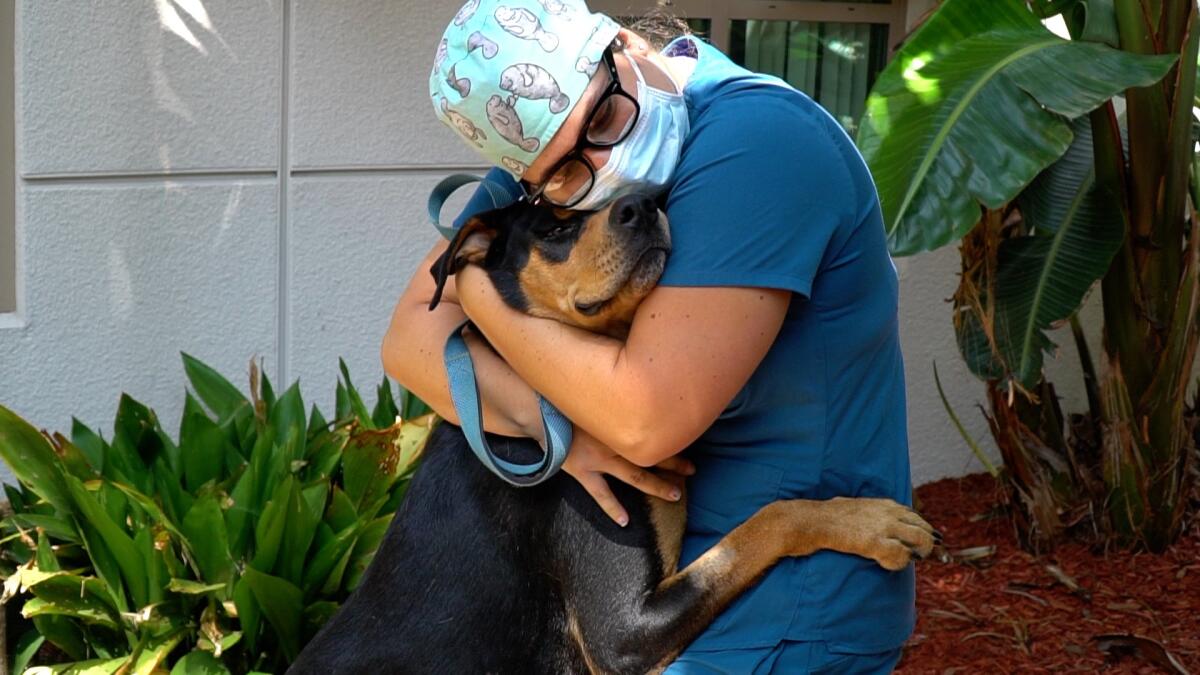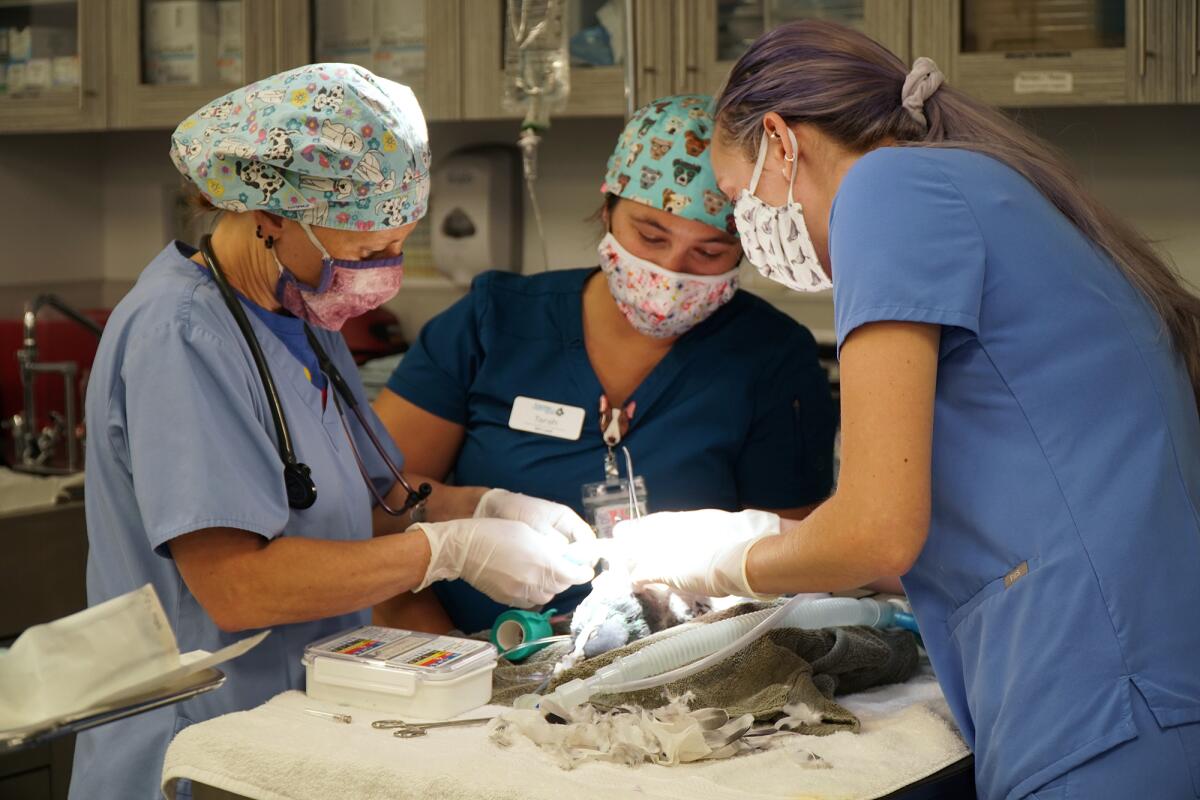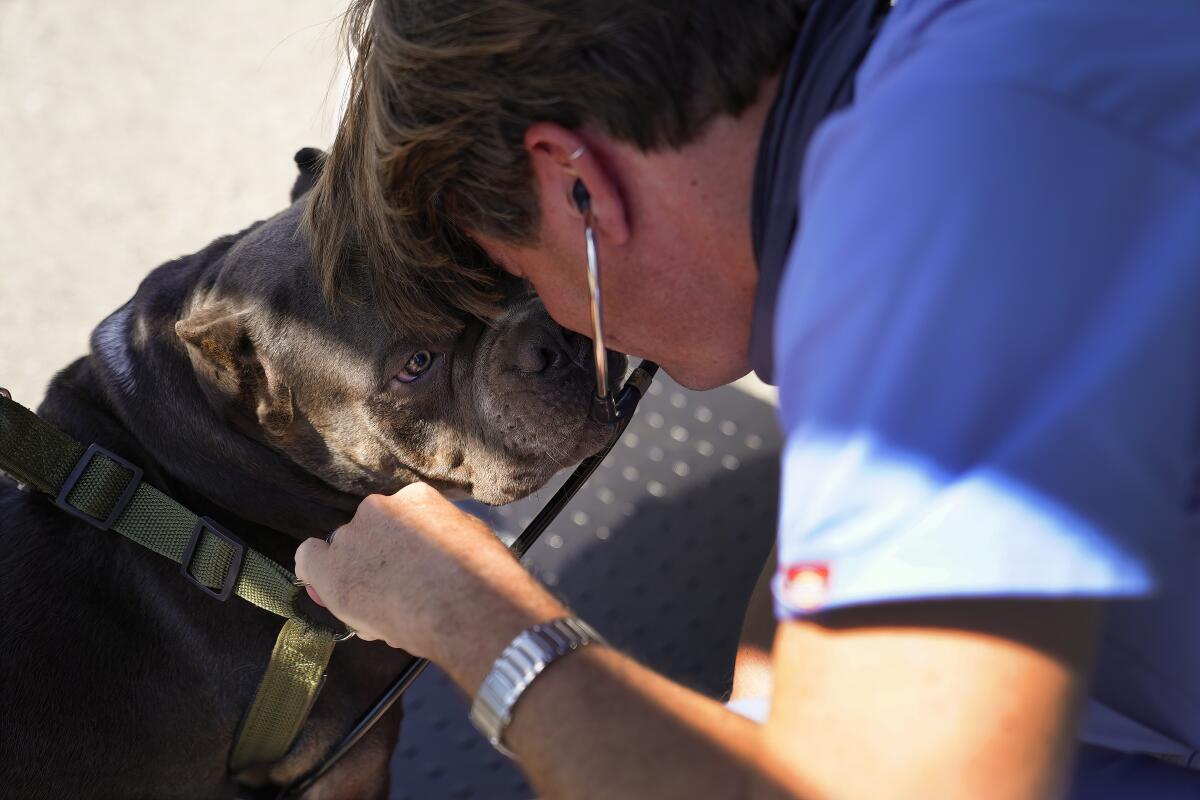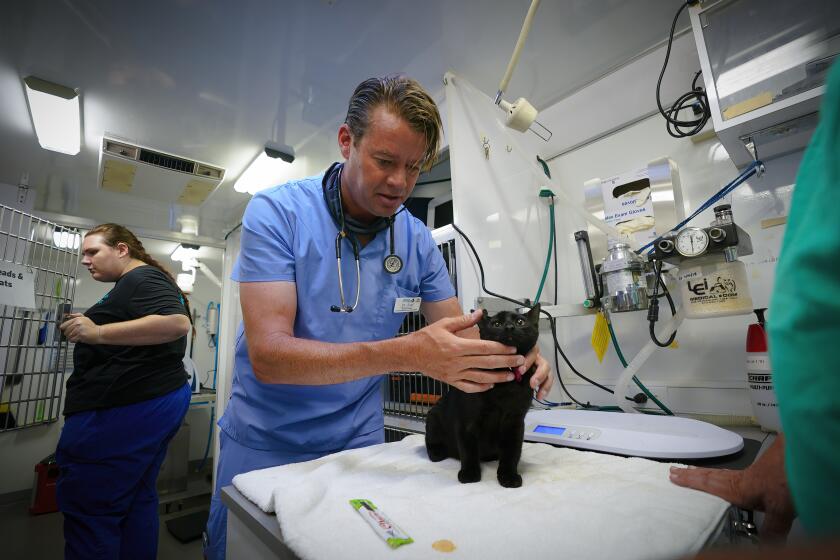There aren’t enough veterinarians in some California communities. Can student debt relief help?

SAN DIEGO — Amid a crisis-level shortage of veterinary care in California, the San Diego Humane Society is calling on the state Legislature to help round up more veterinarians throughout the state.
Assembly Bill 1237 was recently introduced by Assemblymember Cottie Petrie-Norris (D-Irvine) and is co-sponsored by the San Diego Humane Society and San Francisco SPCA — the state’s two largest animal welfare organizations.
The bill would offer up to $150,000 in student debt relief to licensed California veterinarians who agree to work for a California animal shelter or in underserved communities for at least five years.
It aims to attract current veterinarians to practice in areas where demand is greatest by providing state and private funding to apply toward their school loans.
Get our essential investigative journalism
Sign up for the weekly Watchdog newsletter for investigations, data journalism and more.
You may occasionally receive promotional content from the Los Angeles Times.
Veterinarians have the second-highest monthly debt-to-income ratio among graduate degree holders, according to the American Veterinary Medical Assn., which reports that veterinary graduates’ debt is growing by nearly $6,000 each year.
“The veterinary shortage is one of the most serious challenges we face today in animal welfare. We have to take action to attract more veterinarians to practice in California, especially in shelters,” said Dr. Gary Weitzman, president and chief executive of the San Diego Humane Society. “We also have to think about what this veterinary shortage means for vulnerable pets and their owners throughout the state.”
San Diego Humane Society officials say veterinary medicine has dealt with staffing problems for years, but the pandemic supercharged the problem.
Pet adoption rates skyrocketed through the COVID-19 shutdowns. Across the nation, about 23 million households welcomed new furry family members during the pandemic, according to a 2021 estimate by the American Society for the Prevention of Cruelty to Animals.
While veterinarians’ workloads grew, vets couldn’t see as many pets, and many pet parents forwent wellness visits at the height of the pandemic. That — coupled with the additional appointments needed for newly adopted pets — boosted demand for vet appointments, resulting in weeks-to months-long waits.

Even now, shorthanded veterinary hospitals and clinics are still being slammed and struggling to keep up with the demand, according to the San Diego Humane Society.
Its shelters have been hit equally hard. With nearly 1,000 animals currently in its care, the demand for medical resources is significant. But the organization’s vacant medical positions are hard to fill.
On average, positions are open for 50 days, which in turn affects the shelter’s ability to perform medical procedures essential to making animals in their care adoptable. This lack of access to basic care means animals are staying in shelters for longer.
The San Diego Humane Society isn’t struggling to provide veterinary care only for its shelters’ animals. It’s also struggling to help other San Diegans access care.
Just a few months ago, the shelter launched a community veterinary program aimed at making veterinary services more accessible in some of San Diego’s underserved communities, where essential care is lacking or hard to access.
The San Diego Humane Society’s new mobile clinic aims to provide low-cost veterinary services to underserved communities
At its San Diego campus on Thursdays and Fridays and a traveling clinic that visits under-resourced neighborhoods on Wednesdays and Saturdays, staff provide pet exams, vaccinations, flea medications and other basic sick care for conditions ranging from ear infections to dermatitis.
In its first four months, the clinic had about 1,400 appointments. With appointments consistently at capacity, staff say they are witnessing firsthand the demand for affordable veterinary care.

A recent study by Mars Veterinary Health, a network of pet care companies, estimated that the nation will be 15,000 veterinarians short of demand by 2030 if pet ownership continues to grow at its current rate and vet schools aren’t able to pump out enough graduates to meet growing demand.
“With veterinary school debt averaging nearly $200,000, it’s no wonder we have a vet shortage,” said Petrie-Norris. “It’s cruel to allow pets to suffer prolonged illnesses — by alleviating the stress of education debt, we can increase veterinary care access for the nearly 350,000 California shelter animals who are waiting for lifesaving treatment.”
AB 1237 will go through the committee process before heading to the Assembly floor for a vote.
More to Read
Sign up for Essential California
The most important California stories and recommendations in your inbox every morning.
You may occasionally receive promotional content from the Los Angeles Times.












